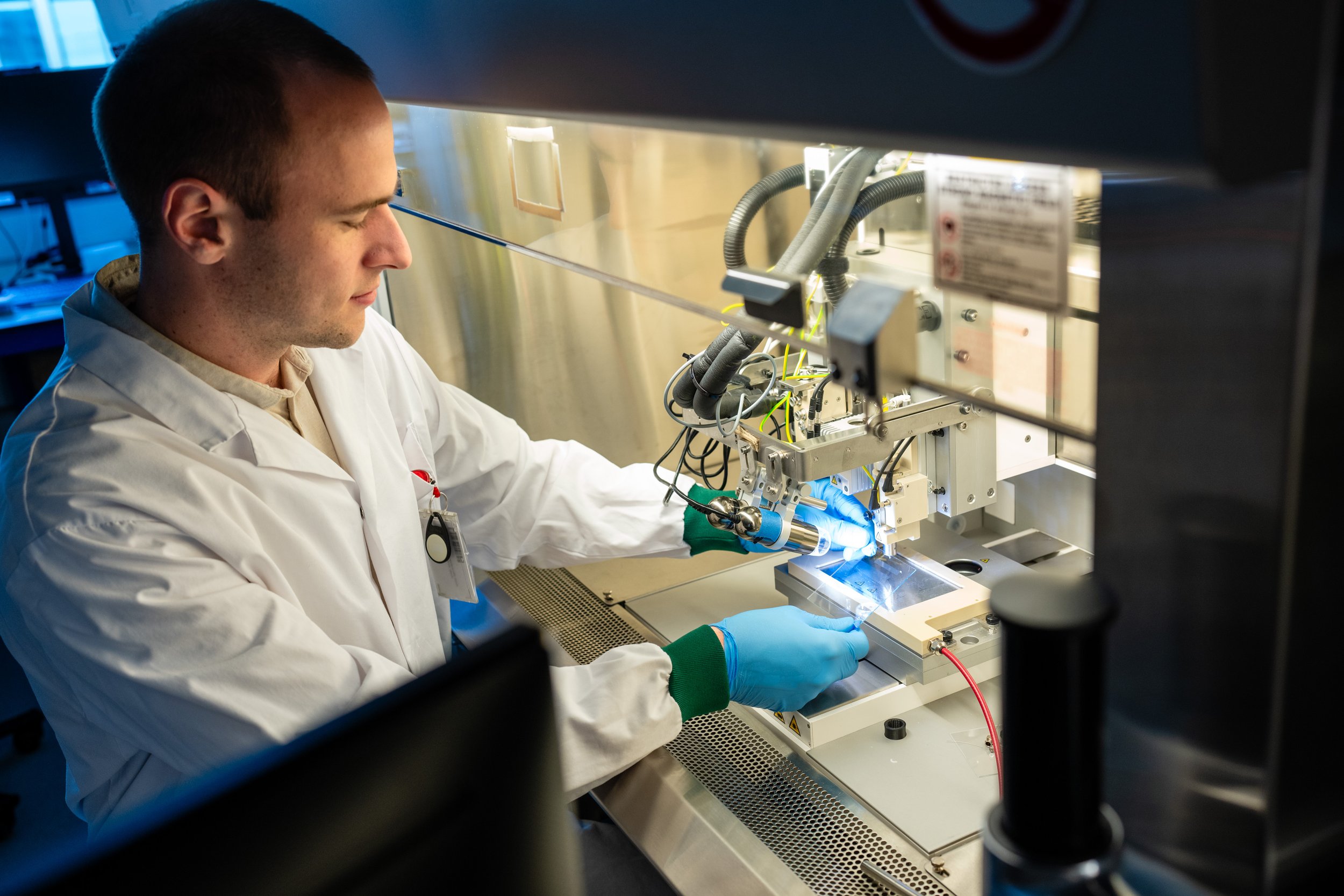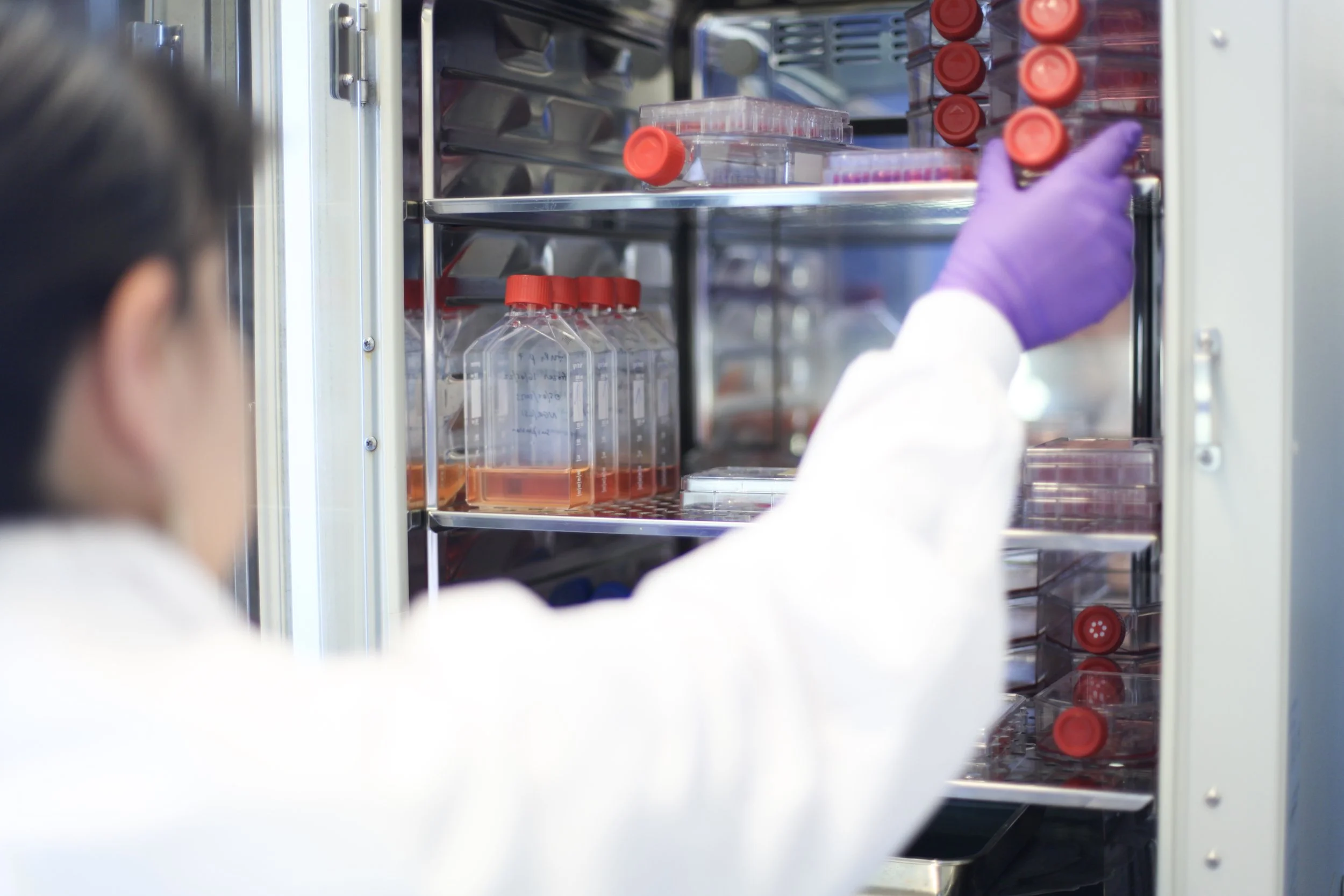
our RESEARCH
In our research, we are using 3D printing technology and living cells to create functional tissues for transplantation and as miniaturized models of health and disease. The Maldalab’s prime focus is the implementation of these “biofabrication” technologies for the regeneration of musculoskeletal tissues, such as cartilage, meniscus and bone. Moreover, we learn about the intriguing natural structure of the articular tissues by investigating this in a wide range of different mammalian species, ranging from mice to elephants and from dolphins to whales.
Outcomes of the Maldalab have been the foundation for a number of firmly integrated research lines within Regenerative Medicine Center Utrecht (RMCU), including those focussing on the regeneration of renal, cardiac, hepatic and pancreatic tissues and the innovative approaches in combining printing technologies and reinforcing living 3D tissue structures have gained widespread adoption in the field.
Learn about our main projects
Restoring the structural collagen network in the regeneration of cartilage.
Effective ways to regenerate damaged tissues in the body need to be identified. Cell-based tissue engineering approaches require more precise organisation regarding biomechanical properties, functionality, and mechanical stability. The inability to provide a lasting cure for mechanically challenged tissues, such as articular cartilage, remains a significant issue. The ERC-funded Re-COLL project aims to understand the formation and integration of collagen networks in articular cartilage to create durable implants for damaged joints. This project will study the factors influencing collagen network formation and develop larger tissue grafts to guide structural organisation and integration. Ultimately, it seeks to advance orthopaedic regeneration by creating more functional biosimilars to restore tissue anisotropy in patients.
A bioprinting platform for the rapid, reliable, controlled and quantifiable patterning of cellular aggregates and microtissues into macroscale regenerative grafts with programmable architectures.
Current bioprinting methods struggle to create biomimetic tissues that function properly in vivo. Since many tissues mature postnatally over years, a promising approach is to bioprint early-stage tissue constructs that can develop within the body. Microtissues and organoids, formed from self-organizing cellular aggregates, offer a better model for engineering complex tissues. The micro2MACRO project aims to develop a new bioprinting platform that arranges microtissues into personalized, load-bearing grafts, guiding their remodeling into functional tissues. This will use high-resolution bioprinting to deposit cells into scaffold structures, which will aid tissue fusion and provide mechanical support for 3–5 years, ensuring durability and function in vivo.
A biofabrication toolbox for the next generation of sustainable living materials in life sciences.
Realistic, lab-made tissues are essential to feed and keep healthy a growing and ageing world population without harming the planet. However, current production methods are still too slow and expensive, and do not always deliver the desired properties. FAB4FUTURE combines artificial intelligence with knowledge and methods from medicine and food production in a ‘toolbox’ for the scalable and configurable production of living materials. The researchers are demonstrating their methods in three-dimensional heart models for cardiovascular disease research and in cultured meat with the same taste, texture and nutritional value as real meat.
Uniting biology, engineering and medicine to drive material-based regenerative therapies.
Driving regenerative medicine to achieve lasting cures for chronic diseases Reducing the burden of chronic diseases is one of the formidable challenges of our time. Regenerative Medicine addresses this by reinforcing the healing capacity of the human body. With an interdisciplinary team of leading scientists from regenerative biology, engineering, and medicine, DRIVE-RM strives to unravel patient-specific processes of regeneration and to steer the regeneration of damaged tissues and organs in health and disease using implantable biomaterials with ‘intelligent’, life-like properties.
A biofabrication toolbox for the next generation of sustainable living materials in life sciences.
Realistic, lab-made tissues are essential to feed and keep healthy a growing and ageing world population without harming the planet. However, current production methods are still too slow and expensive, and do not always deliver the desired properties. FAB4FUTURE combines artificial intelligence with knowledge and methods from medicine and food production in a ‘toolbox’ for the scalable and configurable production of living materials. The researchers are demonstrating their methods in three-dimensional heart models for cardiovascular disease research and in cultured meat with the same taste, texture and nutritional value as real meat.
Regenerative Technologies for Osteoarthritis
Osteoarthritis (OA) is a painful joint disorder caused by cartilage degeneration. It affects 1.5 million people in the Netherlands and costs €1.3 billion per year. Currently, there is no treatment available to slow down or cure the disease, leaving patients to struggle with pain and limited mobility in daily activities. In this project, LS-CarE, we aim to improve their lives by developing durable regenerative cartilage implants. These living implants are based on revolutionary stem cell, bioreactor, and 3D printing technologies and will provide a lifelong solution for people suffering from OA. By actively involving researchers, industry, physicians, and patient organizations, the consortium ensures support from both patients and doctors for its applicability, as well as from industry for bringing these implants to market.
Standardized open Modular Approach to Recapitulate Tissues.
Organ-on-Chip (OoC) is a game-changing approach in which human cells are cultured in microfluidic chips simulating and predicting the response of healthy and diseased human tissues. OoC has the potential to revolutionize today’s biomedical testing procedures that often involve ethically challenged animal testing and, most importantly, lead to variable results. Despite its promise, OoC adoption is hampered by profound technical and functional limitations. In this multidisciplinary program, engineers and biomedical researchers join forces with 25 end users to overcome these limitations by developing a novel, Standardized, open and Modular OoC Approach to Recapitulate Tissues (“SMART OoC”).
Engineering an innovative tissue for ischemic heart disease
Ischemic heart disease (coronary artery disease) is the leading single cause of death in Europe. Biomedical researchers are seeking solutions in self-repairing mechanisms of tissues or organs. However, the most promising solution lies in advancements in cell reprogramming, biomaterials or 3D printing combined with the profound study of myocardial physiology. The EU-funded BRAV3 project will develop a lasting biological device able to pump alongside a damaged heart through the engineering of a regenerative tissue with the use of biomaterials, stem cells and advanced computational modelling with 3D printable designs. By developing biological ventricular assist devices (BioVADs), BRAV3 will bring a quantum leap in regenerative medicine and its translation towards the clinic, as well as impact the development of novel medical technologies whilst greatly advancing our knowledge on human heart development.
reGeneRative bone Implant for the treatment of hip dysPlasia.
Hip dysplasia is a condition associated with the misalignment of the bones of the hip joint. It usually occurs when the socket in the pelvis is too shallow to fit the femoral head. Corrective surgery is the usual treatment option, but it has limited success. The ERC-funded GRIP project has developed a novel implant with bone-inducing properties for correcting hip dysplasia. The implant is personalised to meet the anatomical requirements of each individual patient, ensuring a perfect fit. Importantly, its regenerative capacity guarantees stable and long-term integration into the patient’s native bone.
Meniscal functionalised scaffold to prevent knee Osteoarthritis onset after meniscectomy.
Meniscal resection often leads to early osteoarthritis (OA), which necessitates alternative reconstructive strategies. The EU-funded MEFISTO project proposes to develop a functionalised nanomaterial-based scaffold capable of interacting with the native meniscal tissue. This innovative device will promote local revascularisation and help regenerate the native meniscus, especially in younger patients. At the same time, it will deliver drugs locally to modulate tissue inflammation in patients with advanced OA. Given the considerable number of individuals undergoing meniscectomy, the MEFISTO interventions will improve surgery outcomes and reduce OA-related co-morbidities.
Osteoarthritis Moonshot
-The road to a bio-artificial joint-
The Osteoarthritis Moonshot by RegMed XB aims to develop a smart, biomechanical implant that restores joint function and promotes natural cartilage regeneration. Initially, it focuses on regenerative osteochondral implants for focal defects and small joint replacements, with a long-term goal of creating bioengineered living joints. Promising prototypes with layered structures are being tested, using patient-derived cartilage cells for small implants and lab-grown stem cells for larger ones.
Advanced therapies can potentially treat and even cure chronic diseases by aiding or stimulating the body’s repair and defense mechanisms. Innovation Center for Advanced Therapies (ICAT) is an innovative hub that bridges research, clinical practice, and business by uniting diverse expertise and infrastructure. Through its three facilities—a Biofabrication Pilot Facility creating patient-specific tissues and models, a GMP Simulation Facility that streamlines production processes and supports co-development or membership options, and a GMP Production Facility scaling advanced therapies—ICAT accelerates the translation of regenerative treatments and ATMPs into scalable, patient-specific healthcare solutions worldwide.
FUNDING






























